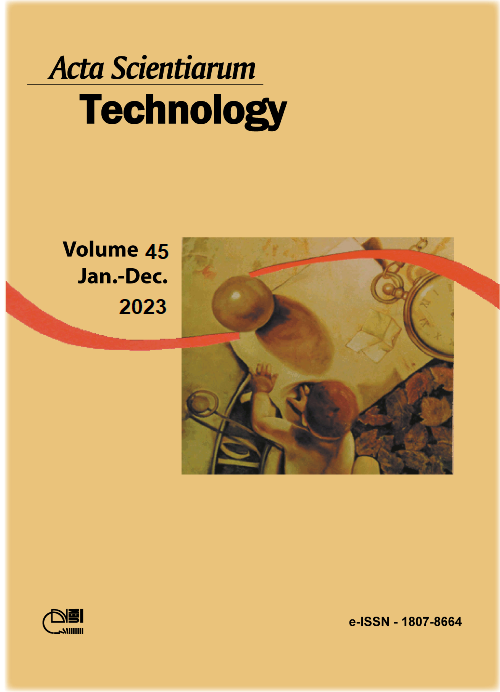Goldenberry powder processing: analysis by a response surface methodology
DOI:
https://doi.org/10.4025/actascitechnol.v45i1.60695Keywords:
cape gooseberry; fruit powder; carotenoids; optimization; desirability; central composite designAbstract
Goldenberry (Physalis peruviana) is a fruit of great interest for its nutritional properties and bioactive compounds, such as carotenoids. This study aimed to determine the ideal conditions for the development of a goldenberry powder. A Central Composite Design (CCD) was adopted to obtain response surfaces. For processing, different temperatures (50 - 70ºC) and times (27.18 - 32.82 hours) were used for dehydration of the fruits, evaluating the content of total carotenoids as a response and the moisture content around 15%. Data obtained were tested by analysis of variance (ANOVA) and fitted to a second-order polynomial equation using multiple regression analysis. An optimization study was carried out and the desirability function methodology was applied to find the ideal process condition. The optimization was determined at 52ºC and in a time of 27.18 hours, in which the experimental value obtained for total carotenoids was 12656.5 ± 527.22 mg 100 g-1 and moisture content of 15.00 ± 0.26%. In this condition, the global desirability value was 1.000 and the experimental values agreed with the predicted ones. Second-order polynomials were able to predict the carotenoids content in goldenberry powder, as well as the moisture content of the powder. The CCD and response surface tools were effective in optimizing the process. The production of goldenberry powder under these experimental conditions represents a viable alternative for adding value to the fruits, enabling the production of a potential food ingredient with carotenoid retention.
Downloads
References
Downloads
Published
How to Cite
Issue
Section
License
DECLARATION OF ORIGINALITY AND COPYRIGHTS
I Declare that current article is original and has not been submitted for publication, in part or in whole, to any other national or international journal.
The copyrights belong exclusively to the authors. Published content is licensed under Creative Commons Attribution 4.0 (CC BY 4.0) guidelines, which allows sharing (copy and distribution of the material in any medium or format) and adaptation (remix, transform, and build upon the material) for any purpose, even commercially, under the terms of attribution.
Read this link for further information on how to use CC BY 4.0 properly.











8.png)




